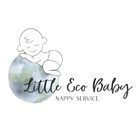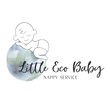The Hard Truth
I have titled this blog post The Hard Truth because I’m worried about confronting people. I know every parent only wants the best for their children. So if in sharing my knowledge I catch you off guard, I am sorry, I just hope you can take some of this on board and perhaps consider some chemical free alternatives for your family.
You may not realise this, or even believe it, but in Australia manufacturers of baby products like nappies and wipes do not have to disclose their ingredients and unfortunately most refuse to do so! The majority of the chemicals used in our products in Australia are released onto the market on the basis that they are safe until proven unsafe. Because of this, it’s almost impossible to find out all the different chemicals in some nappies so you can make an informed choice. For this reason, even if you’re not considering the switch to modern cloth nappies, we would always encourage you to choose a more eco nappy where the manufacturer discloses their ingredients.
If you’re reading and thinking things like: A small nappy can’t cause that much harm to a baby. Or, everyone uses them, it really can’t be that bad. You should consider this:
- 60% - 65% of everything we put on our skin soaks into our bloodstream and organs. This can increase up to 100% for genitalia.
- Babies are more susceptible to the effects of chemicals due to their rapidly developing organ systems.
- Infants are born with a developing epidermal barrier that is more permeable and more reactive to the environment through the first 2 years of their lives.
The scary reality is that almost all mainstream disposable nappies contain toxic chemicals and our babies are at risk! These toxins are all through mainstream disposables. There’s the inner layer touching your baby’s skin, and is therefore, a big risk issue. There’s the absorbent core in the middle, this layer absorbs fluids, but when the baby repositions, fluid may be squeezed out of the core (assumedly contaminated) and back onto baby's skin. And finally, the waterproof outer layer. These materials are most often some kind of petroleum-based plastic or plastic-treated material.
So let me break it down to WHAT is in these nappies? WHY it's included? and HOW it effects our babies?
Sodium polycarbonate: The absorbent core of a nappy is usually made from some sort of wood pulp and sodium polyacrylate. Sodium polycarbonate is a super absorbent chemical compound that is used in the fillers of many disposable nappies. It is composed of cellulose processed from trees that is mixed with crystals of polyacrylate. This chemical absorbs fluids and creates surface tension in the lining of the diaper to bind fluids and prevent leakage. Sodium polyacrylate is often visible as small gel-like crystals on the skin of babies and is thought to be linked to skin irritations and respiratory problems. This chemical was removed from tampons due to toxic shock syndrome concerns. As it has only been used in nappies for the last two decades, there is not yet research on the long-term health effects of sodium polyacrylate on babies.
Dioxins: These are a by-product of chlorine, which is used during the bleaching process of mainstream disposables. According to the U.S. Environmental Protection Agency (EPA), they are listed as the most toxic of all carcinogenic chemicals and are banned in most countries! Exposure to dioxins may cause skin reactions and altered liver function as well as having lasting impacts on the immune, nervous, endocrine and reproductive systems.
Phthalates: These make the plastic in disposables softer and more resilient. They are known endocrine disruptor's and even in small doses may be carcinogenic.
Fragrance: These are used in some disposable nappies to help mask odours. The scents found in many nappies are strong and chemical-laden, with the potential to cause health issues like nappy rash and respiratory symptoms.
Dyes: These can be found in the coloured patterns on the outside of nappies, sometimes in the leg cuff, back elastic, and in the wetness indicator. These dyes can cause rashes, irritations and allergic reactions.
Tributyl-tin (TBT): The dyes in many disposable nappies contain a chemical called tributyl-tin (TBT). This is considered a highly toxic environmental pollutant. TBT harms the immune system and impairs the hormonal system, and it is speculated that it could cause sterility in boys. Additionally, according to research published by the American Institute of Biological Sciences, TBT can trigger genes that promote the growth of fat cells, causing obesity in humans. TBT spreads through the skin and has a hormone-like effect in the tiniest concentration.
Plastics and petroleum: These adhesive chemicals are used in the sticky tabs to close the nappies. Petroleum contains a wide variety of volatile organic compounds.
Volatile Organic Compounds (VOCs): Disposable nappies release chemicals called volatile organic compounds (VOCs) which immediately contaminate the air. These include chemicals such as ethylbenzene, toluene, xylene and dipentene. VOCs are known to cause eye, nose and throat irritation, headaches, damage to the liver, kidney and central nervous system as well as cancers.
Scary and confronting hey! Remember though, I am not pointing the finger or sitting back on my high horse. This only clicked for us relatively recently. Our daughter Eden wore disposables and we didn’t even think to question it. When it came to chemicals we were more blasé. But we have continued to learn and question.
For me, this knowledge of my baby’s vulnerability kick started my modern cloth nappy journey and later our passion for Little Eco Baby. So if you’re motivated, or even inquisitive, think about giving one of our nappy service packages a try. By using modern cloth nappies that are made from chemical free natural fibres you are ensuring the best overall health for your own Little Eco Baby.
Ditching disposables can mean big positive impacts for the health of your family.
Sources and further reading:
- https://healthwyze.org/reports/475-toxins-in-disposable-diapers-dioxin-and-sodium-polyacrylate
- https://www.alternet.org/personal-health/toxic-diapers-your-childs-disposable-diapers-contain-endocrine-disruptors
- Scrotal temperature is increased in disposable plastic lined nappies http://adc.bmj.com/content/83/4/364.full
- http://blog.hellocharlie.com.au/disposable-nappy-cheat-sheet/
- https://www.babygearlab.com/expert-advice/what-is-inside-those-disposable-diapers
- https://www.livestrong.com/article/111348-chemicals-disposable-diapers/
- http://www.safecosmetics.org/wp-content/uploads/2015/02/Babys-Tub-Is-Still-Toxic.pdf
- National Toxics Network http://www.ntn.org.au
I feel I have to acknowledge that a lot of my sources are websites and other blogs. Call me conspiracy theorist if you wish, but it is seriously hard to find funded, independent Australian studies investigating the risks of chemicals in our products. I urge you to question why this is... (But I'll put that can of worms aside for now).


Leave a comment